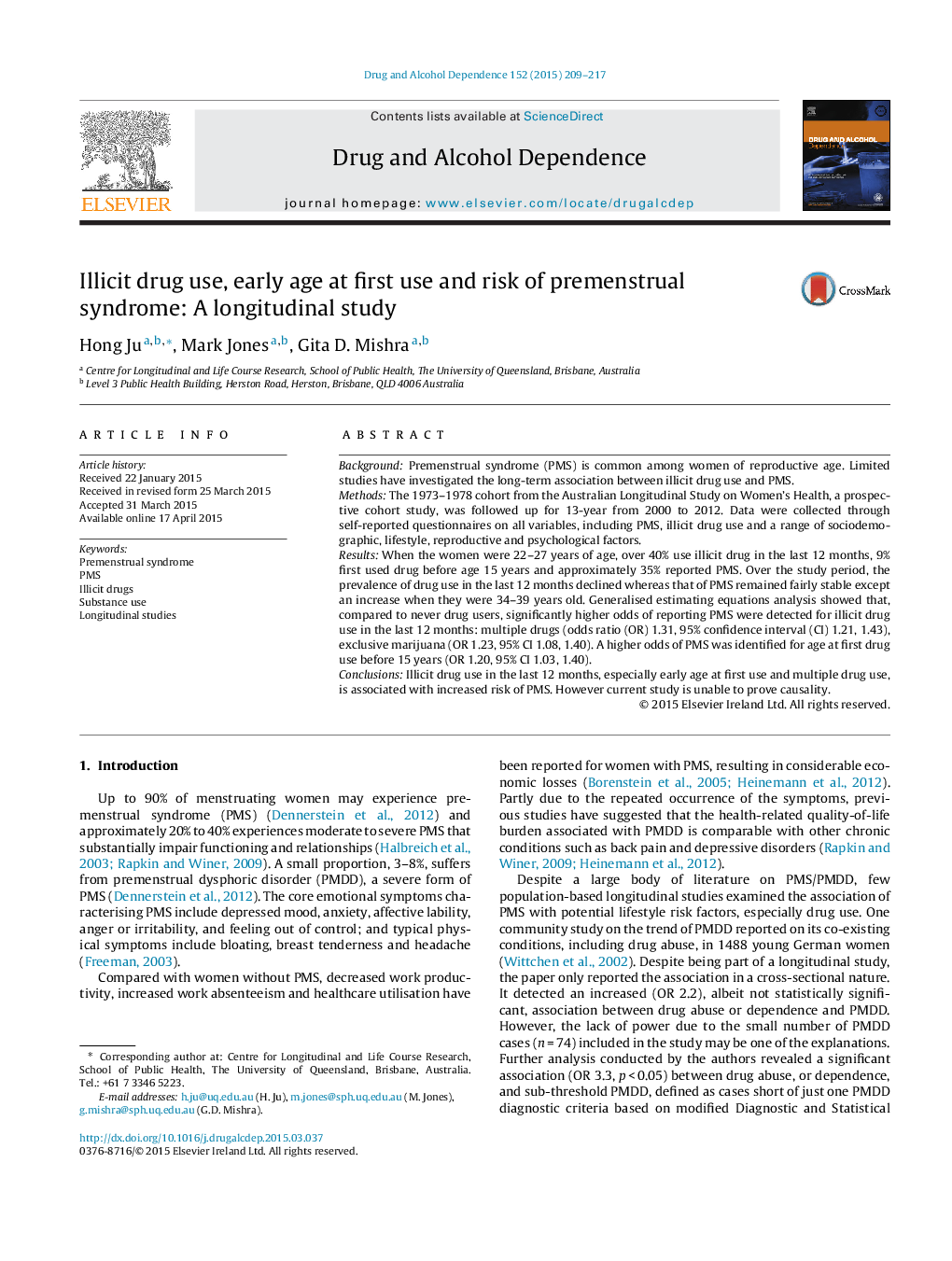| Article ID | Journal | Published Year | Pages | File Type |
|---|---|---|---|---|
| 1069789 | Drug and Alcohol Dependence | 2015 | 9 Pages |
•PMS is a common menstrual disorder among women of reproductive age.•Illicit drug use is prevalent among young women, with 10% first use before 15 years.•This is the first population-based longitudinal study investigating the association.•Illicit drug use in the last 12 months is associated with higher risk of PMS.•Multiple drug use and early age at first drug use showed even higher risk of PMS.
BackgroundPremenstrual syndrome (PMS) is common among women of reproductive age. Limited studies have investigated the long-term association between illicit drug use and PMS.MethodsThe 1973–1978 cohort from the Australian Longitudinal Study on Women's Health, a prospective cohort study, was followed up for 13-year from 2000 to 2012. Data were collected through self-reported questionnaires on all variables, including PMS, illicit drug use and a range of sociodemographic, lifestyle, reproductive and psychological factors.ResultsWhen the women were 22–27 years of age, over 40% use illicit drug in the last 12 months, 9% first used drug before age 15 years and approximately 35% reported PMS. Over the study period, the prevalence of drug use in the last 12 months declined whereas that of PMS remained fairly stable except an increase when they were 34–39 years old. Generalised estimating equations analysis showed that, compared to never drug users, significantly higher odds of reporting PMS were detected for illicit drug use in the last 12 months: multiple drugs (odds ratio (OR) 1.31, 95% confidence interval (CI) 1.21, 1.43), exclusive marijuana (OR 1.23, 95% CI 1.08, 1.40). A higher odds of PMS was identified for age at first drug use before 15 years (OR 1.20, 95% CI 1.03, 1.40).ConclusionsIllicit drug use in the last 12 months, especially early age at first use and multiple drug use, is associated with increased risk of PMS. However current study is unable to prove causality.
